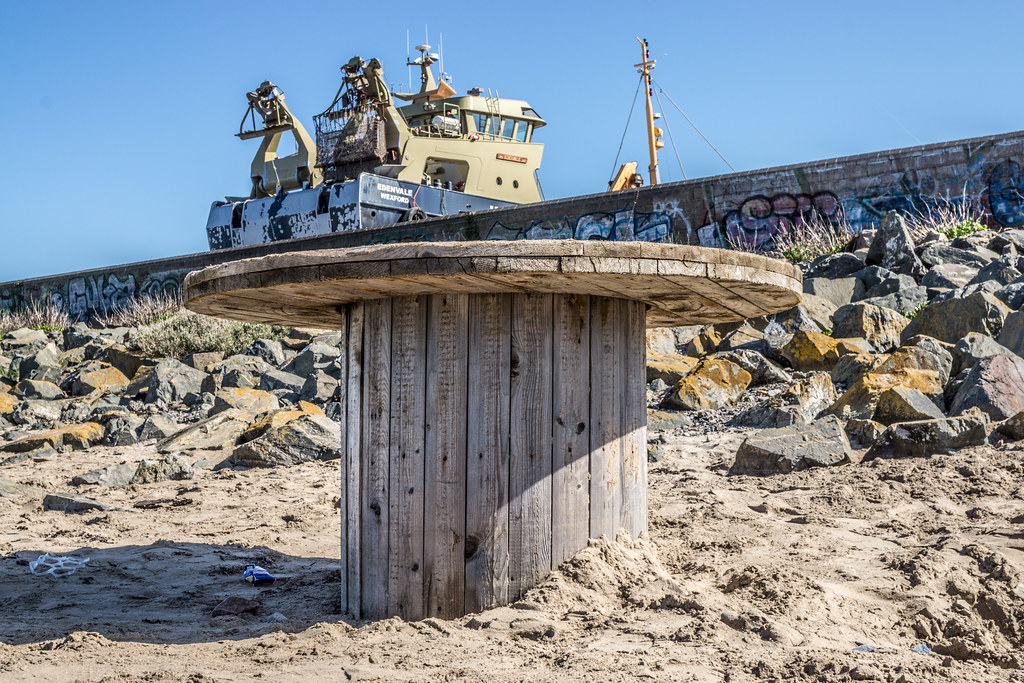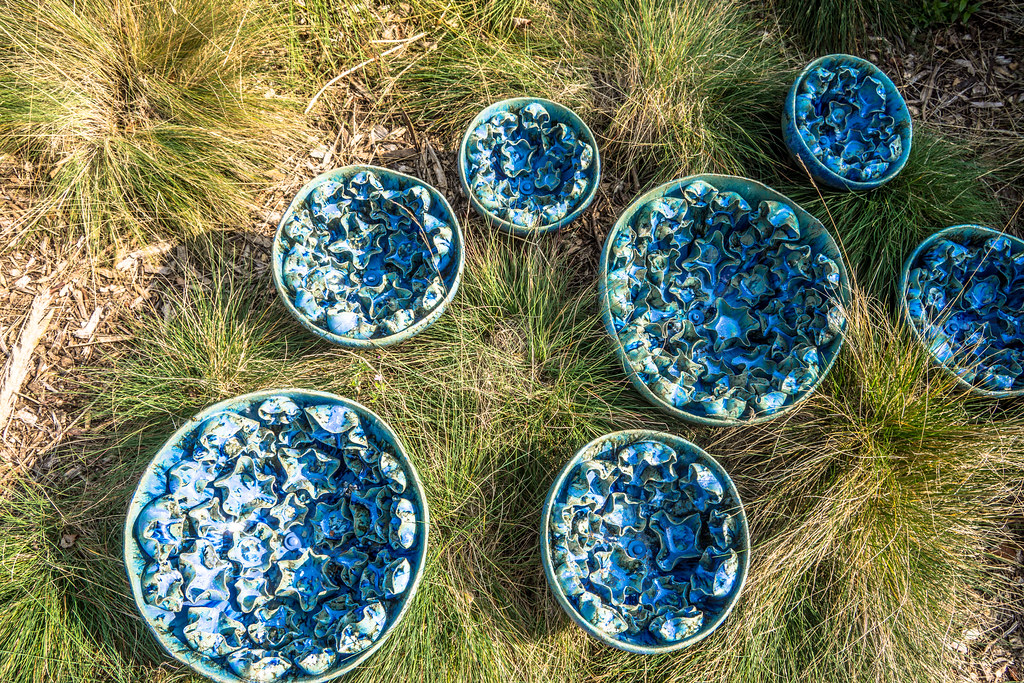14 November 2016
Iarnród Éireann has confirmed that new commuter services connecting stations between Newbridge and Parkwest with Connolly to Grand Canal Dock via the Phoenix Park Tunnel line will commence on Monday 21st November.
The introduction of the new services follows an investment of €13.7 million in upgrading the Phoenix Park Tunnel route, funded by the National Transport Authority.
A small number of minor alterations to other services to/from Heuston will also take effect from this date, and the final schedules have been approved by the National Transport Authority following public consultation.
Phoenix Park Tunnel services
Seven new morning peak trains to Grand Canal Dock, and eight new evening peak trains from Grand Canal Dock begin on Monday 21st November, with limited stop services in the opposite direction:
Morning Peak
06.14 Newbridge to Grand Canal Dock
06.50 Hazelhatch to Grand Canal Dock
07.00 Newbridge to Grand Canal Dock
07.20 Newbridge to Grand Canal Dock
08.10 Hazelhatch to Grand Canal Dock
08.35 Hazelhatch to Grand Canal Dock
09.12 Newbridge to Grand Canal Dock
07.25 Grand Canal Dock to Hazelhatch*
07.49 Grand Canal Dock to Hazelhatch*
08.10 Grand Canal Dock to Newbridge*
Evening peak
16.20 Grand Canal Dock to Hazelhatch
16.40 Grand Canal Dock to Newbridge
17.00 Grand Canal Dock to Hazelhatch
17.28 Grand Canal Dock to Newbridge
17.58 Grand Canal Dock to Hazelhatch
18.16 Grand Canal Dock to Newbridge
18.40 Grand Canal Dock to Hazelhatch
19.13 Grand Canal Dock to Hazelhatch
15.10 Newbridge to Grand Canal Dock*
15.55 Hazelhatch to Grand Canal Dock*
17.00 Hazelhatch to Grand Canal Dock*
17.25 Hazelhatch to Grand Canal Dock*
17.55 Hazelhatch to Grand Canal Dock*
17.57 Newbridge to Grand Canal Dock*
These services will serve all stations between Newbridge/Hazelhatch and Parkwest; and Drumcondra, Connolly, Tara Street, Pearse and Grand Canal Dock, except those marked * which will serve limited stops – search the journey planner above for exact times. They will not serve Heuston Station – customers for Heuston should use existing trains between Newbridge/Hazelhatch and Heuston Station.
Services will also ensure connections at Hazelhatch/Newbridge for customers travelling on longer distance commuter services to/from stations such as Kildare, Portlaoise and others.
The new services give a new direct public transport connection between stations in south-west Dublin and north Kildare and the central business district between Connolly and Grand Canal Dock.
This is the first phase of services to operate via the Phoenix Park Tunnel. Iarnród Éireann and the National Transport Authority plan to expand services in the future to include off-peak and weekend services.
Customer FAQ Phoenix Park Tunnel Fares
For information on Customer FAQ Phoenix Park Tunnel Fares please click here.
Minor revisions to other Heuston routes
To accommodate new Phoenix Park Tunnel services, the following minor changes to timetables will take effect from Monday 21st November:
Commuter services06.40 Heuston to Newbridge advanced to 06.35
08.30 Heuston to Portlaoise advanced to 08.25
17.20 Heuston to Portlaoise deferred to 17.28
17.55 Heuston to Newbridge cancelled
18.10 Heuston to Portlaoise advanced to 18.05 and calls additionally at Parkwest and Clondalkin Fonthill
18.55 Heuston to Portlaoise deferred to 19.05hrs
06.25 Portlaoise to Heuston operates 2 to 3 minutes earlier from Monasterevin onwards
06.30 Carlow to Heuston operates 2 to 4 minutes later from Newbridge onwards
07.20 Portlaoise to Heuston advanced to 07.17
19.30 Portlaoise to Heuston advanced to 19.17
Intercity services18.00 and 19.00 Heuston to Cork: minor revisions to times at intermediate stations
06.45 Cork to Tralee advanced to 06.20
07.00 Tralee to Heuston deferred to 07.05
19.00 Ballybrophy to Limerick deferred to 19.05
19.38 Limerick Junction to Limerick deferred to 19.40
20.45 Limerick Junction to Limerick deferred to 20.47
06.05 Waterford to Heuston advanced to 06.00
09.25 Heuston to Galway additional stop at Oranmore
17.20 Galway to Heuston additional stops at Kildare and Newbridge
![THE MINISTER PLUS PLATFORM 10 AND THE PHOENIX PARK RAILWAY TUNNEL [NOT FORGETTING IRISH RAIL STAFF] REF-107146](https://c5.staticflickr.com/1/716/20675313652_4ae336581a_b.jpg)
![EARTH HORSE BY HELEN MERRIGAN-COLFER [SCULPTURE IN CONTEXT 2015]-123796](https://c7.staticflickr.com/6/5768/31156122542_da12ff0f99_b.jpg)
![EARTH HORSE BY HELEN MERRIGAN-COLFER [SCULPTURE IN CONTEXT 2015]-123796](https://c7.staticflickr.com/6/5768/31156122542_da12ff0f99_b.jpg)
![KEEPING FIT BY PIETER KONING [SCULPTURE IN CONTEXT 2015]-123795](https://c4.staticflickr.com/6/5681/30492127683_6c4d887efb_b.jpg)
![KARLIN LILLINGTON FROM THE IRISH TIMES [AT A MEETING]-123793](https://c6.staticflickr.com/6/5326/31184913861_c803f684bd_b.jpg)
![MEMORIAL TO MARGARET ANNA CUSACK [THE NUN OF KENMARE - AN INTERESTING LADY TO SAY THE LEAST]-123788](https://c6.staticflickr.com/6/5542/31171766381_6d48574d35_b.jpg)

![RED RUFFED LEMUR [CAN BE SEEN IN DUBLIN ZOO]-123699](https://c1.staticflickr.com/6/5543/31185579536_e51c0475b3_b.jpg)
![RED RUFFED LEMUR [CAN BE SEEN IN DUBLIN ZOO]-123698](https://c5.staticflickr.com/6/5533/30400127004_11006b823d_b.jpg)
![RED RUFFED LEMUR [CAN BE SEEN IN DUBLIN ZOO]-123697](https://c6.staticflickr.com/6/5572/31220920005_c04dda1836_b.jpg)
![RED RUFFED LEMUR [CAN BE SEEN IN DUBLIN ZOO]-123696](https://c8.staticflickr.com/6/5334/31107159711_640ba32eb7_b.jpg)
![P21 - Irish Navy Ship LÉ Emer [Now Operated By The Nigerian Navy As The NNS Prosperity]-123689](https://c3.staticflickr.com/6/5611/31183244186_d8f2e46012_b.jpg)
![Irish Merchant Navy Memorial [City Quay Dublin]-123686](https://c3.staticflickr.com/6/5578/30850970810_3ae13e07b5_b.jpg)
![BUSHY PARK [AN ATTRACTIVE PUBLIC PARK IN TERENURE DUBLIN]-123654](https://c4.staticflickr.com/6/5678/30397259483_847c1399eb_b.jpg)
![INTERNET OF THINGS WORLD [DUBLIN CONVENTION CENTRE NOVEMBER 2016]-123498](https://c2.staticflickr.com/6/5679/30352113553_7e7d56854b_b.jpg)
![TRINITY FOOTBRIDGE [CORK]-123402](https://c1.staticflickr.com/6/5520/30753917480_6ce27c4628_b.jpg)
![TRINITY FOOTBRIDGE [CORK]-123403](https://c4.staticflickr.com/6/5832/30314555403_ae27194161_b.jpg)
![THE MINISTER PLUS PLATFORM 10 AND THE PHOENIX PARK RAILWAY TUNNEL [NOT FORGETTING IRISH RAIL STAFF] REF-107146](https://c5.staticflickr.com/1/716/20675313652_4ae336581a_b.jpg)
![GEOMETRIC FORMS BY ALEXANDRA WEJCHERT [UNIVERSITY OF LIMERICK CAMPUS]--117483](https://c5.staticflickr.com/8/7407/27563233436_75ce04b76f_b.jpg)
![LUAS TRAM SYSTEM CONSTRUCTION PHASE [UPPER DOMINICK STREET]-123233](https://c7.staticflickr.com/6/5757/30998649246_e0babf0363_b.jpg)
![WASP BY ROB BYRNE [SCULPTURE IN CONTEXT 2016]-123226](https://c5.staticflickr.com/6/5567/30890627732_6495e01188_b.jpg)
![ERECT BY LENA WILLRYD [SCULPTURE IN CONTEXT]-123219](https://c7.staticflickr.com/6/5508/30728295630_5ff0859b80_b.jpg)
![SLICE OF LIFE BY PADDY Mc CORMACK [SCULPTURE IN CONTEXT 2016]-123208](https://c1.staticflickr.com/6/5702/30969092456_4ebe2b7957_b.jpg)
![THE WEDGE BY KEVIN PIERCE [SCULPTURE IN CONTEXT]-123200](https://c5.staticflickr.com/6/5728/30702416780_cfabeb0213_b.jpg)
![ANTERIOR HEAD BY THOMAS GLENDON [2016 SCULPTURE IN CONTEXT]-123194](https://c4.staticflickr.com/6/5537/31000338915_64d2759861_b.jpg)
![TALL HORSE EMBRACE BY HELEN MERRIGAN COLFER [SCULPTURE IN CONTEXT 2016]-123185](https://c7.staticflickr.com/6/5471/30698073030_2fbea3e71b_b.jpg)
![TALL HORSE EMBRACE BY HELEN MERRIGAN COLFER [SCULPTURE IN CONTEXT 2016]-123179](https://c1.staticflickr.com/6/5477/30874091672_d11b99b7cb_b.jpg)
![TALL HORSE EMBRACE BY HELEN MERRIGAN COLFER [SCULPTURE IN CONTEXT 2016]-123178](https://c6.staticflickr.com/6/5710/30990319525_d0311fd4c3_b.jpg)
![TALL HORSE EMBRACE BY HELEN MERRIGAN COLFER [SCULPTURE IN CONTEXT 2016]-123177](https://c2.staticflickr.com/6/5513/25354698609_9f8e4a8231_b.jpg)
![ESTER BY THOMAS GLENDON [SCULPTURE IN CONTEXT]-123175](https://c2.staticflickr.com/6/5698/30989781585_80e2c2b125_b.jpg)
![ESTER BY THOMAS GLENDON [SCULPTURE IN CONTEXT]-123174](https://c3.staticflickr.com/6/5550/22811384818_cc13582220_b.jpg)
![ESTER BY THOMAS GLENDON [SCULPTURE IN CONTEXT]-123173](https://c1.staticflickr.com/6/5759/30954729936_144bd5b10c_b.jpg)
![SUPERMAC’S OUTLET [TEMPLE BAR]-123162](https://c1.staticflickr.com/6/5715/30950305936_be8cbd5be4_b.jpg)
![GOURMET BURGER KITCHEN [TEMPLE BAR DUBLIN]--123161](https://c2.staticflickr.com/6/5706/30896859521_f60e4edf59_b.jpg)
![OLIVER ST. JOHN GOGARTY’S [HOTEL AND RESTAURANT]-123159](https://c5.staticflickr.com/6/5628/30945066956_f26c5818b8_b.jpg)
![MILANO IN TEMPLE BAR [PIZZA EXPRESS REBRANDED]-123155](https://c6.staticflickr.com/6/5582/25332517589_aa63e3c085_b.jpg)
![ELEPHANT & CASTLE [TEMPLE BAR DUBLIN]-123157](https://c8.staticflickr.com/6/5471/30890981031_c95bda3b55_b.jpg)
![HENRIETTA PLACE [AN UGLY LANEWAY PARALLEL TO BOLTON STREET]-123151](https://c4.staticflickr.com/6/5549/25308525459_8b98fca9c8_b.jpg)
![HENRIETTA PLACE [AN UGLY LANEWAY PARALLEL TO BOLTON STREET]-123150](https://c4.staticflickr.com/6/5633/30856022251_7f03285812_b.jpg)
![HENRIETTA PLACE [AN UGLY LANEWAY PARALLEL TO BOLTON STREET]-123149](https://c1.staticflickr.com/6/5583/30827510992_716a59c3c9_b.jpg)
![HENRIETTA PLACE [AN UGLY LANEWAY PARALLEL TO BOLTON STREET]-123148](https://c6.staticflickr.com/6/5706/30856012981_71b0e59808_b.jpg)
![FIRST SIGN OF INSANITY [DROPPING YOUR FURNITURE FROM YOUR 4TH. FLOOR BALCONY]-104163](https://c8.staticflickr.com/8/7737/17577791135_0a83f30a8e_b.jpg)
![RETURN OF OBA BY BARRA CASSIDY [SCULPTURE IN CONTEXT 2016]-123137](https://c7.staticflickr.com/6/5832/22763282318_8697a4384a_b.jpg)
![SYNTHESIS BY MICHELLE MAHER [SCULPTURE IN CONTEXT 2016]-123130](https://c5.staticflickr.com/6/5679/30905479516_f479097faa_b.jpg)



![ST. PAUL’S CHURCH SMITHFIELD [ARRAN QUAY]-123108](https://c3.staticflickr.com/6/5595/30620992530_d6f8be3a2d_b.jpg)
![ST. PAUL’S CHURCH SMITHFIELD [ARRAN QUAY]-123107](https://c4.staticflickr.com/6/5678/30834608611_4501b833c7_b.jpg)
![WHAT’S LEFT OF THE ORIGINAL CITY WALL [LAMB ALLEY OFF THOMAS STREET]-123103](https://c7.staticflickr.com/6/5461/30804389742_1193402a35_b.jpg)